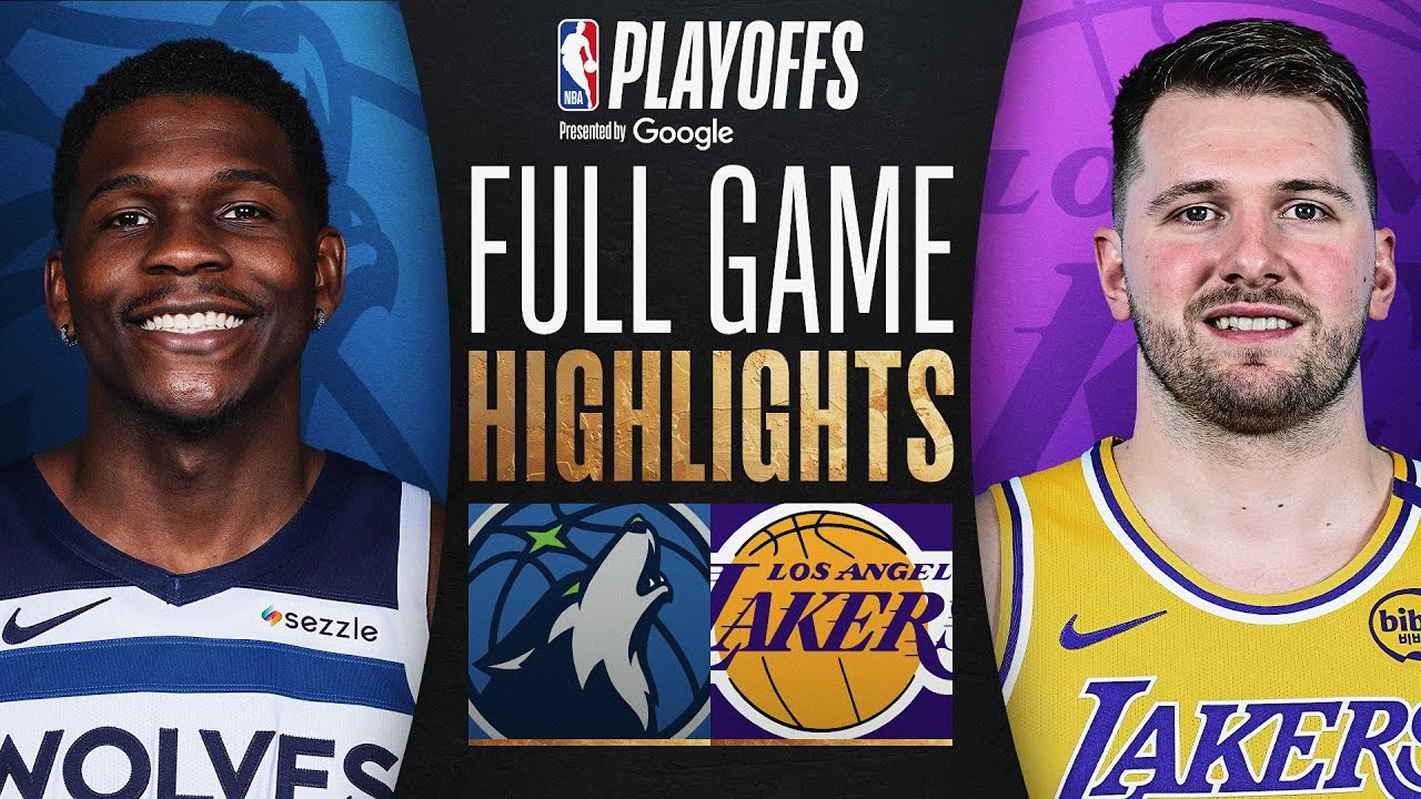The Western Conference playoff clash between the Los Angeles Lakers and the Minnesota Timberwolves became one of the most compelling storylines of the 2025 NBA postseason. The matchup offered a contrast in basketball ideologies — the Lakers’ star-heavy offense led by Luka Dončić and LeBron James versus the Timberwolves’ well-rounded, defense-first roster powered by Anthony Edwards, Rudy Gobert, and Julius Randle.
Minnesota stunned many fans and analysts by dispatching the Lakers in five games (4–1), showcasing the kind of team synergy and physical intensity that often wins playoff basketball. Here’s an in-depth breakdown of the series, highlighting player stats, key moments, and the broader implications for both franchises.
🏀 Series Overview: Wolves Dominate with Depth
The Timberwolves entered the series as underdogs in name only. Their gritty style, paint dominance, and bench production overwhelmed the Lakers’ superstar-reliant approach.
Final Series Score: Timberwolves 4 – Lakers 1
Average Winning Margin (MN): +9.4 points
Average 4th Quarter Differential: Timberwolves +8.4
Rebounds per Game: Timberwolves 49.2 – Lakers 41.3
While LeBron James and Luka Dončić produced impressive numbers, Minnesota’s consistent execution across all positions proved too much for Los Angeles to counter.
📊 Player Stats: Game-by-Game Highlights
Minnesota Timberwolves
Anthony Edwards (SG)
Series Average: 26.8 PPG, 6.4 RPG, 5.2 APG
Explosive scoring, particularly in transition. Acted as the primary closer in the 4th quarters.
Julius Randle (PF)
Series Average: 22.6 PPG, 8.1 RPG
Excelled at punishing mismatches in the post, especially when the Lakers used small-ball lineups.
Rudy Gobert (C)
Series Average: 14.2 PPG, 15.6 RPG, 2.4 BPG
Dominated Game 5 with a monstrous 27-point, 24-rebound performance. Controlled the glass and neutralized interior drives.
Key Timberwolves Role Players
Mike Conley: Managed pace, contributed 11.4 PPG, 6.3 APG
Naz Reid & Kyle Anderson: Sparked bench runs with physicality and timely shooting.
Los Angeles Lakers
Luka Dončić (PG)
Series Average: 30.2 PPG, 7.8 RPG, 6.1 APG
Produced at an elite level, but efficiency dipped due to physical Minnesota defense. Struggled from three-point range.
LeBron James (SF)
Series Average: 25.4 PPG, 9.0 RPG, 5.6 APG
The engine of the team, but fatigue was a factor. Carried too much of the offensive load alongside Dončić.
Supporting Cast
D’Angelo Russell & Jarred Vanderbilt: Inconsistent shooting and defensive breakdowns plagued both.
Maxi Kleber & Jaxson Hayes: Rotated to address the size disadvantage but couldn’t stop Gobert or Randle inside.
🧠 Key Tactical Trends
1. Rebounding Disparity
Minnesota dominated the boards across all five games. Gobert and Randle cleaned up the glass, especially on second-chance opportunities, where the Timberwolves outscored the Lakers 62–28 in the series.
2. Fourth Quarter Execution
The Wolves repeatedly surged in final quarters. They outscored Los Angeles 127–85 in fourth quarters across the five games. Anthony Edwards took over offensively, while the Lakers’ half-court sets often stagnated.
3. Star Reliance vs. Team Depth
Lakers leaned almost exclusively on Luka and LeBron. Timberwolves had six players averaging double figures, proving that balanced scoring beats superstar duos in playoff battles.
4. In-Game Adjustments
Coach Chris Finch outmaneuvered Lakers’ staff by rotating defensive matchups and using zone principles to force tough perimeter shots. Lakers, on the other hand, showed little lineup creativity.
🔥 Game 5: Decisive Blow
Game 5 was the final dagger. The Timberwolves closed out the series at home with a 103–96 victory.
Top Performers:
Rudy Gobert: 27 pts, 24 rebs (9 offensive)
Anthony Edwards: 25 pts, 8 assists, 4 steals
LeBron James: 24 pts, 10 rebs, but 6 turnovers
Luka Dončić: 31 pts, 5 assists, but poor shooting in the 4th quarter
The Lakers’ strategy to go small backfired again, as Gobert punished them on both ends. LeBron and Luka looked visibly fatigued by the final minutes, unable to close the gap.
🧩 Series Takeaways
✅ Minnesota Timberwolves
Strengths: Rebounding, ball movement, defense
Weaknesses: Occasional lapses in 3-point shooting
Future Outlook: With Gobert anchoring the paint and Edwards evolving into a two-way star, this team looks built for deep playoff runs.
❌ Los Angeles Lakers
Strengths: Top-tier star power
Weaknesses: Lack of bench scoring, poor interior defense, too much isolation
Future Outlook: Must address frontcourt size and add consistent shooters. Luka and LeBron need more support to function efficiently.
📣 What’s Next?
Timberwolves: Awaiting their next playoff opponent, now considered legitimate contenders in the West.
Lakers: A crucial offseason awaits. With LeBron aging and Dončić entering his prime, roster construction is critical. Rumors are already swirling about potential trades or coaching changes.
🎤 Final Thoughts
The Lakers vs. Timberwolves series reminded fans that in modern playoff basketball, it’s not always the brightest stars who shine the longest—it’s the strongest systems. Minnesota’s chemistry, physicality, and poise under pressure earned them a well-deserved victory. For the Lakers, the mirror is unavoidable: it’s time to evolve or risk fading into another season of unmet expectations.















